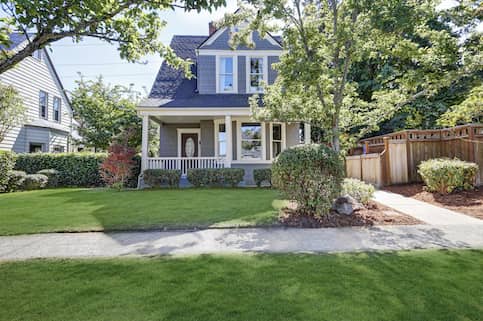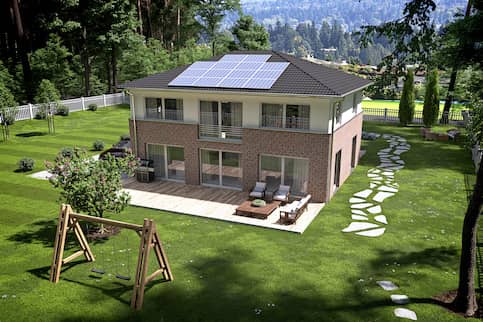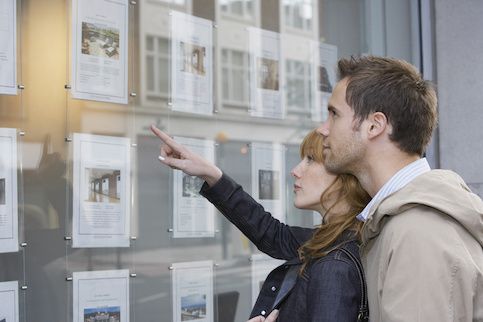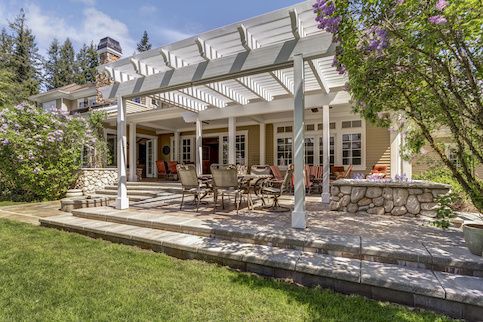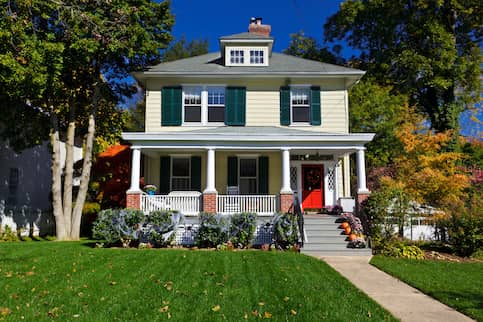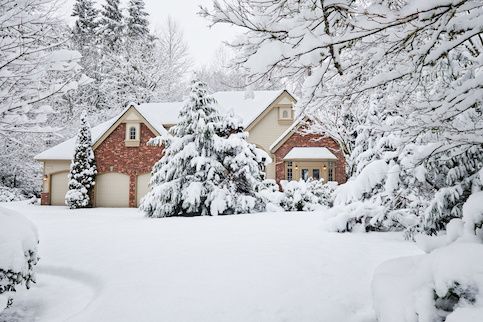The interest rate on your mortgage makes a huge difference in how much you pay each month and in overall interest. Even a small difference has a big impact on your bottom line. Borrowers can reduce the mortgage rate and save money with a mortgage rate buydown, also known as buying points. Learning how buying points reduces your rate can help you decide if is the right move for you.
Key Takeaways:
- A mortgage rate buydown is a way to lower the interest rate on your home loan by paying more at closing.
- You may also hear a mortgage rate buydown referred to as buying discount points.
- Buying a lower mortgage rate will increase your upfront costs but can help you reduce your monthly payment and pay less interest overall.
What Is A Mortgage Rate Buydown?
A mortgage rate buydown is when a borrower buying a home or refinancing their mortgage pays the lender an upfront free to reduce the interest rate on the loan. Lowering your interest rate reduces your monthly payment and how much overall interest you pay on your loan.
Buydowns are sold as mortgage points, also referred to as discount or prepaid interest points. Buying one point costs 1% of the loan amount and usually reduces your interest rate by 0.25%. Points are available in fractional amounts, too, which is helpful because reducing your mortgage rate just a fraction of a percent can save you thousands over time.
You pay points at closing. The final cost will be reported on Page 2 of the closing disclosure your lender will provide you at least three days before closing.
What’s Your Goal?
Buy A Home
Discover mortgage options that fit your unique financial needs.
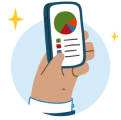
Refinance
Refinance your mortgage to have more money for what matters.
Tap Into Equity
Use your home’s equity and unlock cash to achieve your goals.
Types Of Mortgage Rate Buydowns
You can buy points that reduce your interest rate for a limited time or for the entire loan term.
Permanent Buydown
The buyer pays an upfront fee at closing to permanently reduce the interest rate on their mortgage, saving them money on the monthly payment and total interest.
Temporary Buydown
A temporary buydown reduces the interest rate for a specific time, after which it reverts to the original rate. Temporary buydowns usually are cheaper than permanent buydowns. There are several common types of temporary buydowns:
- 1-0 Buydown. This lowers the interest rate by 1% for the first year of payments. After that, you’ll pay the standard rate.
- 2-1 Buydown. Your interest rate is 2% lower than the standard rate for the first year and 1% lower during the second year. After that, you’ll pay the standard rate.
- 3-2-1 Buydown. This option reduces the interest rate by 1% for each of the first three years. After that, you’ll pay the standard rate.
Ready To Become A Homeowner?
Get matched with a lender that can help you find the right mortgage.
How Do Mortgage Rate Buydowns Work?
If you’re looking to reduce the interest rate on your mortgage, a buydown might be the right move for you. Here’s a closer look at how it works and how much it costs.
Costs Of A Buydown
One discount point typically costs 1% of the total loan amount. So, one point on a $300,000 loan would cost $3,000 and two points would cost $6,000. You can buy fractions of points. For example, a half point on the same loan would cost $1,500. The cost of points is rolled into your closing costs.
It’s important to calculate the break-even point when you buy points. This is how long it will take for your savings from a lower monthly payment to equal the upfront cost of buying points. You calculate the break-even point by dividing the cost of your points by how much you save on your monthly payment. This gives you the number of months it will take to break even. If you plan to sell or refinance your home before you reach the break-even point, then buying points will cost you more than they’ll save you. If you’re doing a temporary buydown, you need to save more during the temporary buydown than you pay for it.
How A Buydown Saves You Money
A lower interest rate saves you money on your monthly mortgage payment and reduce the amount of interest you will pay on your loan over time. Let’s use an example of what you’d save buying points on a $400,000 30-year fixed-rate loan at 7%. Suppose one point costs $4,000 and each point reduces your interest rate by 0.25%.
Savings From A Mortgage Buydown On A $400,000 Loan
| Points | No Points | 1 Point | 2 Points |
|---|---|---|---|
| Interest Rate | 7% | 6.75% | 6.5% |
| Cost Of Points | $0 | $4,000 | $8,000 |
| Monthly Payment | $2,661 | $2,594 | $2,398 |
| Monthly Savings | $0 | $67 | $263 |
| Break-even Point | N/A | 5 Years, 0 Months | 2 Years, 7 Months |
| Total Interest Paid | $558,035 | $533,981 | $463,353 |
| Total Amount Paid | $958,035 | $937,981 | $863,353 |
| Total Amount Saved | $0 | $20,054 | $94,682 |
This example shows the value of paying for points upfront. Paying an extra $8,000 for two points saves you $94,682 over the life of your loan.
Take The First Step To Buying A Home
Find a lender that will work with your unique financial situation.
Pros And Cons Of Buying Down Your Interest Rate
There are advantages and disadvantages to buying down your mortgage rate. Let’s get into some of the potential tradeoffs of this option.
Advantages Of Buydowns
- Lower monthly payments. A buydown reduces the interest rate on your mortgage, making your monthly payments more affordable.
- Increased cash-flow. A lower monthly payment frees up room in your budget for other important expenses.
- Less interest paid overall. A lower interest rate means you pay less interest over the life of your loan, reducing the overall cost of your mortgage.
- Tax deductions. Discount points can be tax-deductible, which can reduce how much you’ll owe the IRS.
Disadvantages Of Buydowns
Some of the downsides of a mortgage rate buydown include:
- Higher upfront costs. With down payments, closing costs and all of the additional expenses associated with buying a new home, a lot of home buyers are tapped out right at the start. Coming up with extra funds for points, especially when they’re not required, might not be appealing.
- Doesn’t make sense if you plan to move soon. Just like any long-term money-saving strategy, it works the best if you plan to be in your home for a while. The math doesn’t quite work out in your favor if you plan to sell your home before your savings can recoup the cost of points.
- Some buydowns are temporary. If your mortgage buydown has an expiration date, you’ll need to be ready to afford the increase in your monthly payment.
Who Benefits From Buying Down An Interest Rate?
Buyers typically benefit the most from a mortgage rate buydown – but they aren’t always the only part who initiates this type of arrangement.
Prospective Home Buyers
Most mortgage rate buydowns are negotiated by home buyers with their lenders. A buydown gives home buyers an opportunity to reduce their interest rate and monthly payment. While the upfront costs may be higher, buyers can save money in the long run.
Home Sellers
When the supply of homes exceeds demand and the buyer has an upper hand, this is known as a buyer’s market. If it’s a buyer’s market and interest rates are relatively high, a seller may offer to buy down the buyer’s mortgage to sweeten the deal.
Builders
Builders developing a new community may offer buyers points on their mortgage to help jumpstart interest. This is more common in areas that are still up-and-coming when interest rates are high. Builders are less incentivized to offer buy downs in already-established communities.
Lenders
Sometimes lenders offer buyers the option of a mortgage rate buydown. When interest rates are high, lenders might offer a special deal to temporarily reduce the mortgage rate for the buyer in exchange for an upfront fee.
Alternatives To Buying Down Your Interest Rate
If the interest rate you’re offered feels too high and you don’t think a mortgage buydown is right for you, then here are some other options:
Adjustable-Rate Mortgages
An adjustable-rate mortgage is a home loan with a fixed low interest rate for a limited introductory period. After that, the interest rate adjusts on a regular interval and is likely to increase at some point. If you don’t want to pay the upfront costs of a mortgage buydown, you can benefit from the initial lower interest rate that comes with an ARM. Just make sure you’ll be able to afford the potential increase once the introductory rate expires.
Mortgage Refinance
Another way to get a lower rate is to refinance when interest rates fall or your credit improves. Refinancing replaces your current mortgage with a new one that has more favorable terms. If rates fall a few years after you take out your mortgage, you can reduce refinance to a new loan with a lower interest rate and monthly payment.
Other Financial Strategies
If you want to avoid the upfront costs of a mortgage rate buydown, here are some other ways to get a better interest rate on your mortgage.
- Improve your credit score.
- Make a larger down payment.
- Reduce your loan term.
FAQ
Here are answers to common questions about mortgage buydowns.
– Market conditions
– Your credit score
– Down payment
– Home price
– Location
– Interest rate type
– Loan term
The Bottom Line
When interest rates are high, a mortgage rate buydown can be a way to reduce the interest rate on your mortgage. You’ll need to pay more upfront, but you’ll benefit from a lower monthly payment and you’ll pay less interest overall. The amount you’ll have to pay to purchase points will vary based on the lender.
Victoria Araj contributed to the reporting of this article.

Rory Arnold
Rory Arnold is a Los Angeles-based writer who has contributed to a variety of publications, including Quicken Loans, LowerMyBills, Ranker, Earth.com and JerseyDigs. He has also been quoted in The Atlantic. Rory received his Bachelor of Science in Media, Culture and Communication from New York University. He also completed the SoFi/Coursera Fundamentals of Personal Finance Specialization consisting of five courses: Introduction to Personal Finance, Saving Money for the Future, Managing Debt, Fundamentals of Investing, and Risk Management in Personal Finance.



